Product Development Strategy: A Closer Look at 10 Proven Approaches
Product development strategy can be mastered by studying the methods of successful companies such as Mailchimp, Adidas and Coca-cola. How can you learn and replicate their success?
There’s no profitable company without a profitable product, this is a fact. That’s why around 20% of small businesses fail within their first year and nearly 50% fail within the first five years.
Now if you look at big companies, they all share a key trait: an effective product development strategy. However, is it feasible to find a one-size-fits-all approach for different products? We don’t think so. In this article, we’ll showcase various successful strategies that can be used as inspiration to create a customized plan or to enhance existing ones.
Table of Contents
- Product Development Strategies
- Product Development Strategy Examples
- 1. Customer or market-oriented strategy: Mailchimp’s product development strategy
- 2. Free trial membership/subscription: Pipedrive’s price driven strategy
- 3. New technology and customer centricity: Adida’s “own the game” strategy
- 4. Reverse engineer: Amazon’s strategy
- 5. Budget-friendly: IKEA’s product development strategy
- 6. Customer-centered and freemium: Zoom’s product development strategy
- 7. Acquisition and divestment: Kellogg’s product development strategy
- 8. New brand acquisition: Coca-Cola’s strategy
- 9. Product and service diversification: Google’s product development strategy
- 10. Purpose-oriented strategy of independent squads: Spotify’s Approach
- Product Development Strategy Conclusion
- Machine Learning In Finance: 12 Essential Applications
- How To Create Interactive Compliance Training For Bank Employees
- How Fintech Apps Are Using Gamification To Increase User Engagement
- Top Gamification Companies for Employee & Customer Engagement
Product Development Strategies
Companies adopt different strategies when developing their products. While some companies prioritize pricing models, new features, technology or innovation, others focus on acquiring similar products or even companies. Regardless of the strategy chosen, it’s important to have a clear understanding of it. When introducing a product to the market, there are 4 key questions to think about:
1. Is your strategy customer/market-oriented?
A customer-oriented strategy involves utilizing customer insights to inform product development and positioning. This approach can be achieved through various methods such as:
- Conducting market research to gather information on target customers.
- Analyzing customer feedback regularly.
- Identifying customer pain points.
- Building a customer-focused culture.
- Creating personas.
- Keeping a close eye on the competition.
- Testing and iterating. products and services based on customer feedback. In order to improve the overall user experience.
2. Is your product development strategy focused on price?
A price-driven strategy is a business approach that uses pricing as the main means of gaining a competitive advantage to achieve profitability. In effect, there are different ways to implement this strategy such as:
- Charging a premium price to position the product as a luxury or high-end item.
- Using value-based pricing to position the product as more affordable.
- Implementing a budget-friendly option or cost-plus pricing which involves determining the cost of the product.
3. Are you ready to invest in innovation?
Investing in innovation and charging for it can provide a competitive advantage, increase revenue and profitability, differentiate the brand, attract and retain customers, stay ahead of market trends, and reduce costs. Under those circumstances, you have no excuses to not start investing in innovation!
4. What about a “first-mover advantage” or “first-to-market advantage”?
What if your business could be the first to introduce a new product or service in the market? Undoubtedly, this could be the key element that propels you ahead of your competitors! Additionally, it also gives you an early advantage in creating brand recognition, drawing in customers, and securing a foothold in the market.
5. Do you have an internal-driven strategy?
A strategy that prioritizes internal resources and capabilities for product development and innovation is known as an internal-driven strategy or in-house strategy.
This approach emphasizes utilizing the company’s own resources and expertise to create, improve, and innovate products or services, with the goal of achieving scalability, cost-efficiency, and adaptability. This strategy can be beneficial for companies that possess strong internal technical expertise or proprietary technology
Product Development Strategy Examples
1. Customer or market-oriented strategy: Mailchimp’s product development strategy
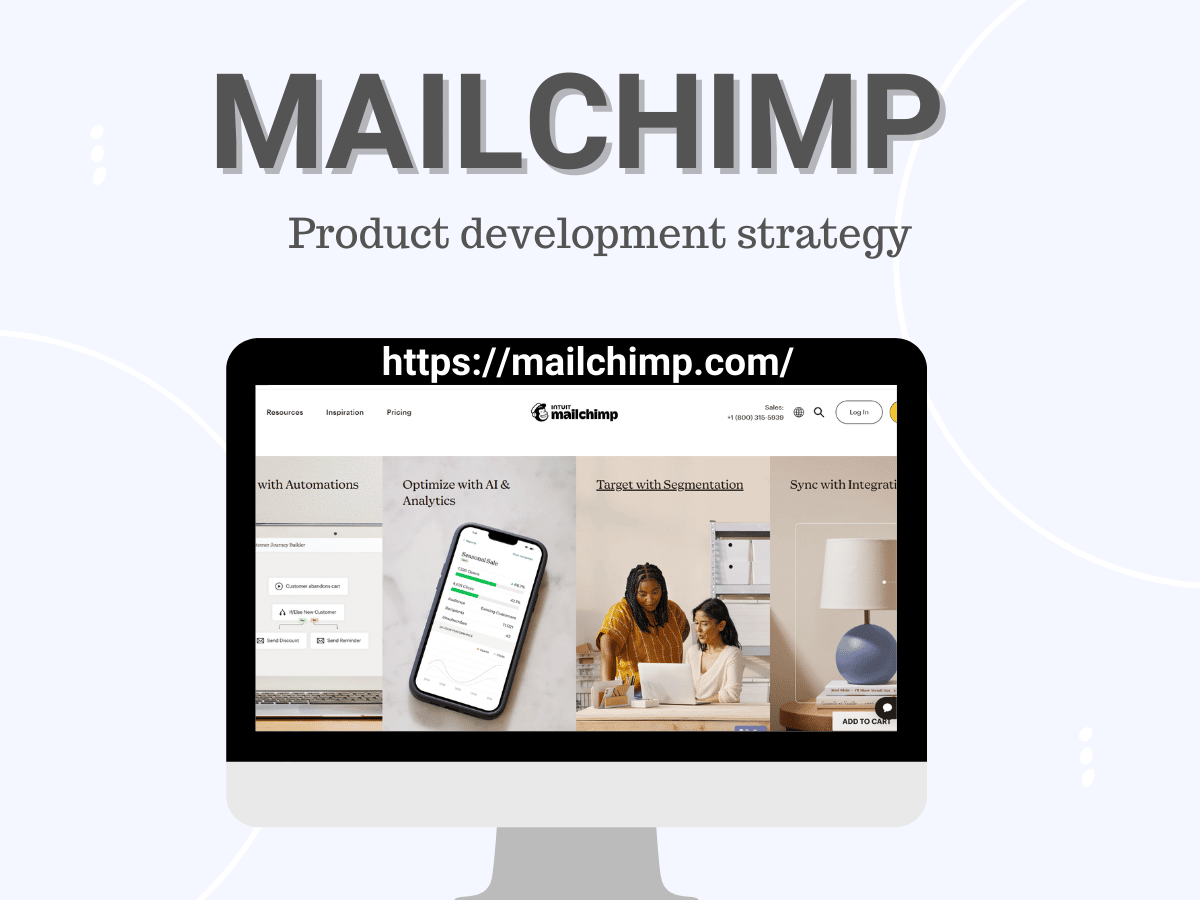
Our first example is Mailchimp, an email marketing service that was created by Ben Chestnut and Dan Kurzius two decades ago.
The company was started as a side project while they were running a web design agency called the Rocket Science Group. The founders saw an opportunity to create an alternative to the expensive email software that was available at the time, to empower small businesses.
They understood the needs of small businesses, as they grew up around small businesses, Ben’s mother ran a hair salon and Dan’s parents had a bakery. In 2007, they decided to close the web design agency and focus exclusively on Mailchimp.
Mailchimp’s strategy is customer-oriented, they listened to their customers’ needs and expanded their services to other channels like social posting, digital ads, a Marketing CRM, shoppable landing pages, postcards, websites, smart content tools, advanced automation, and more.
Now, Mailchimp is a comprehensive Marketing Platform that helps small businesses to “look professional and grow” regardless of the channel.
2. Free trial membership/subscription: Pipedrive’s price driven strategy
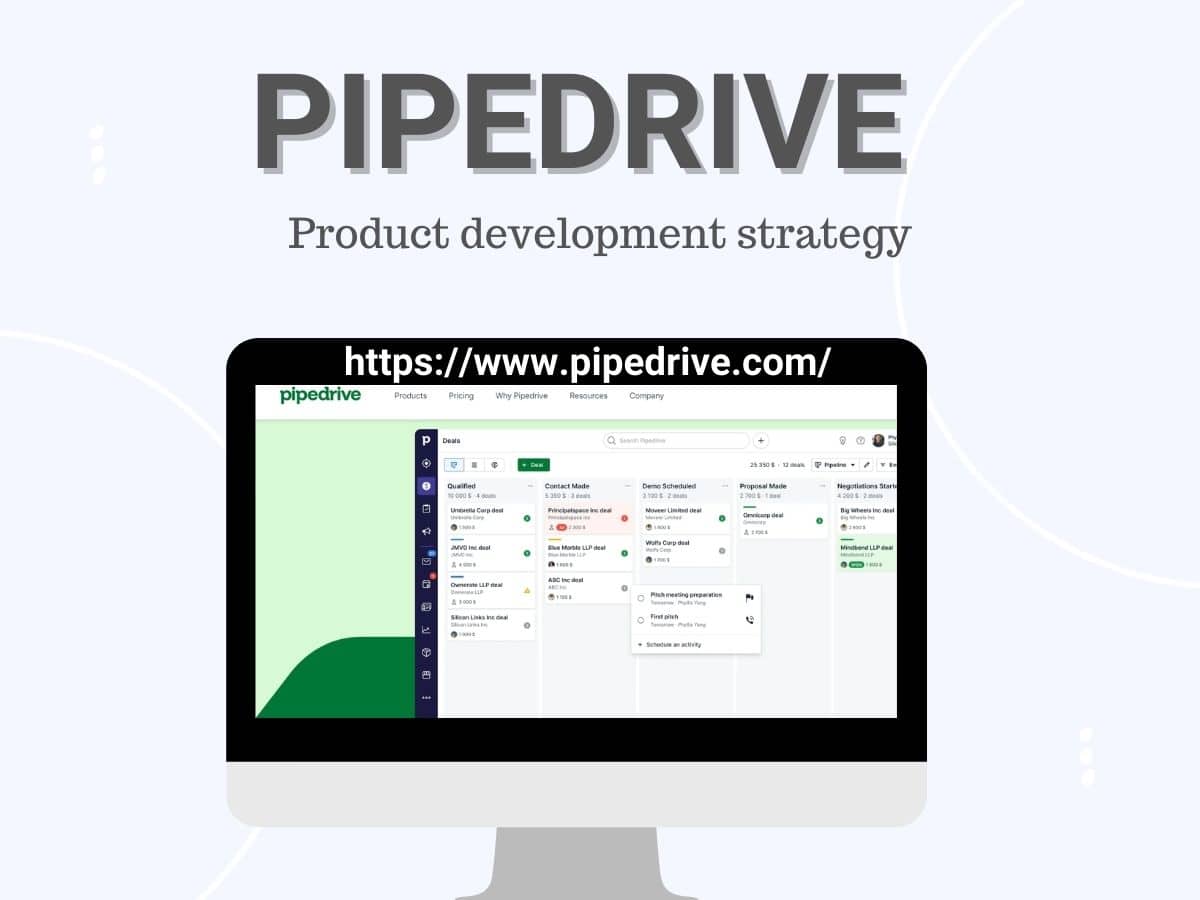
Pipedrive is a sales management software designed to help businesses increase productivity and close more deals by providing a visual pipeline of their sales process and a range of tools to manage contacts, deals, and communications.
It is built with a focus on user-friendliness and flexibility, allowing teams to customize the platform to their specific needs and workflows. Moreover, the software includes features such as email tracking, meetings scheduling, and integrations with other tools like google calendar and LinkedIn Sales Navigator.
To attract new customers, Pipedrive offers a 14-day free trial as part of its pricing strategy. This allows potential customers to test the platform and evaluate its features before committing to a paid subscription.
This is a common pricing strategy for software as a service (SaaS) products as it allows them to showcase their value and generate leads.
Additionally, it allows customers to try the product before they buy it which can make them more likely to subscribe to and trust the company.
Important note:
This approach is particularly effective for businesses with high revenue per user (RPU) and low cost per lead (CPL) since it filters out unqualified leads while still providing an accessible price for potential customers.

There is a way to increase the likelihood of converting trial users into paying customers when gamifying trial extensions!
This approach provides users with the opportunity to fully experience the product, which will increase the chances that they will find it valuable and decide to become paying customers. It also allows you to identify the users who have the highest chance of converting, and give them the necessary time to do so.
3. New technology and customer centricity: Adida’s “own the game” strategy
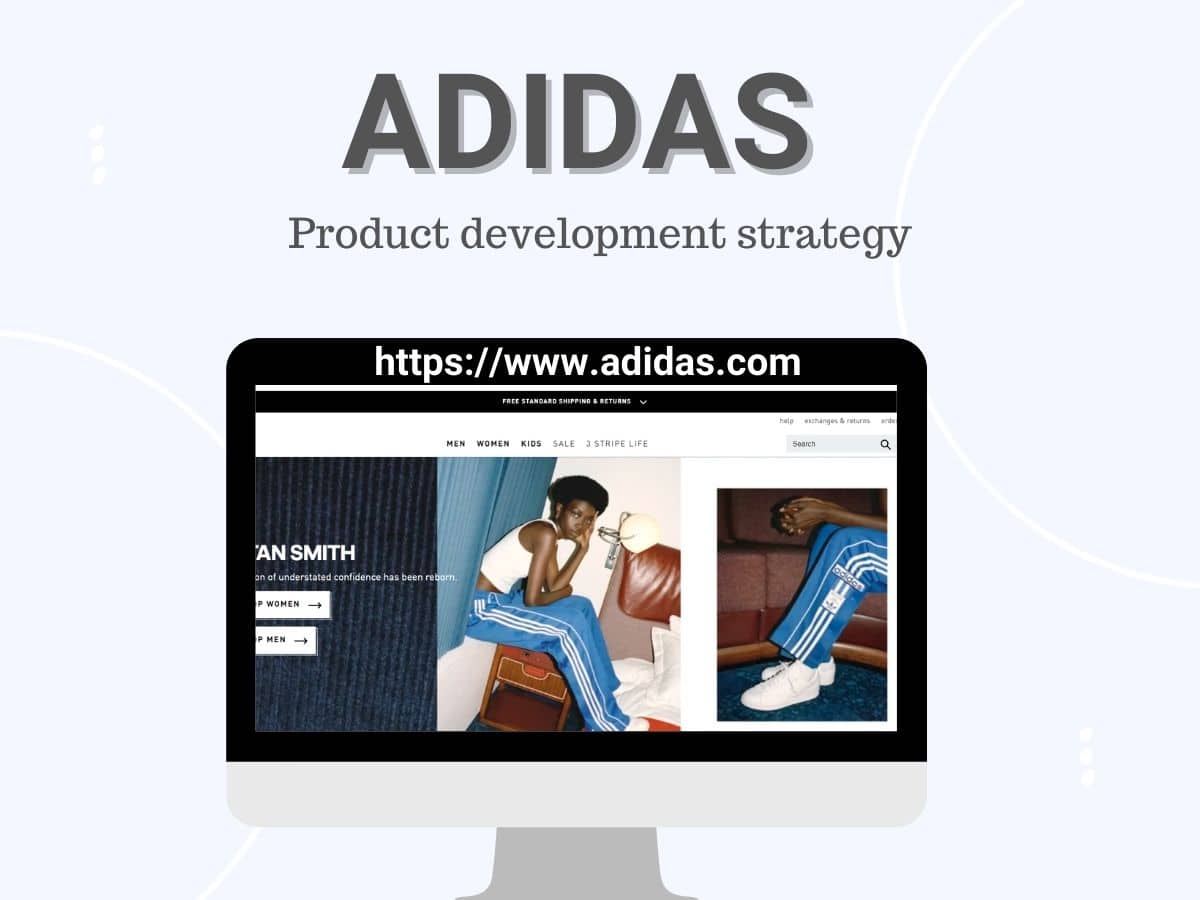
Now let’s have a look at Adidas, the global athletic brand that is heavily investing in technology. To improve its services, Adidas selected Amazon Web Services (AWS) as its preferred cloud provider for SAP workloads. As a result, the company will be migrating its SAP environment to AWS and implementing the SAP S/4HANA platform.
The goal of this move is to digitize core business processes throughout its value chain and provide improved consumer experiences, become more data-driven, and support new business models such as direct-to-consumer sales.
The new cloud-based ERP system will also assist the company’s physical sales channels by integrating SAP environments with AWS capabilities like machine learning and analytics to streamline the supply chain, inventory, and merchandising operations for retail stores globally.
Furthermore, the cloud-based consumer experience will allow for personalized discounts, early access to new releases, priority customer service, and the ability to personalize experiences and offers.
There’s a new initiative called “Own the Game” which aims to enhance the brand’s credibility, provide a unique customer experience, and continue to promote sustainability within the company. Notably, Adidas is dedicated to incorporating sustainable materials in its production process, with the goal of 90% of products being made from sustainable materials by 2025. The company is also focusing on the DTC-led business model.
What is a DTC-led business model?
The eCommerce strategy of selling directly to consumers without intermediaries such as physical stores, wholesalers, or online marketplaces like eBay or Mercado Libre is referred to as the direct-to-consumer business model. With this approach, brands handle all sales directly, bypassing conventional distribution channels.
4. Reverse engineer: Amazon’s strategy

Amazon has developed a unique strategy for product development known as “working backwards.” Instead of beginning with an idea for a new product or feature, the company starts with the customer experience in mind and builds the product backwards from there.
To begin the process, Amazon’s product development team writes an internal press release outlining the launch of a new product. This press release focuses on the customer problem, why current solutions fail to address it, and how the new product will overcome those failures.
It works like this: if the team struggles to write a press release or understand the value a product will bring to customers, it’s a sign that the product is not worth pursuing and further refinement is needed.
Once the project moves into development, the press release serves as a guide for the team, similar to a product roadmap, keeping everyone aligned on the product’s direction, priorities, and progress.
5. Budget-friendly: IKEA’s product development strategy
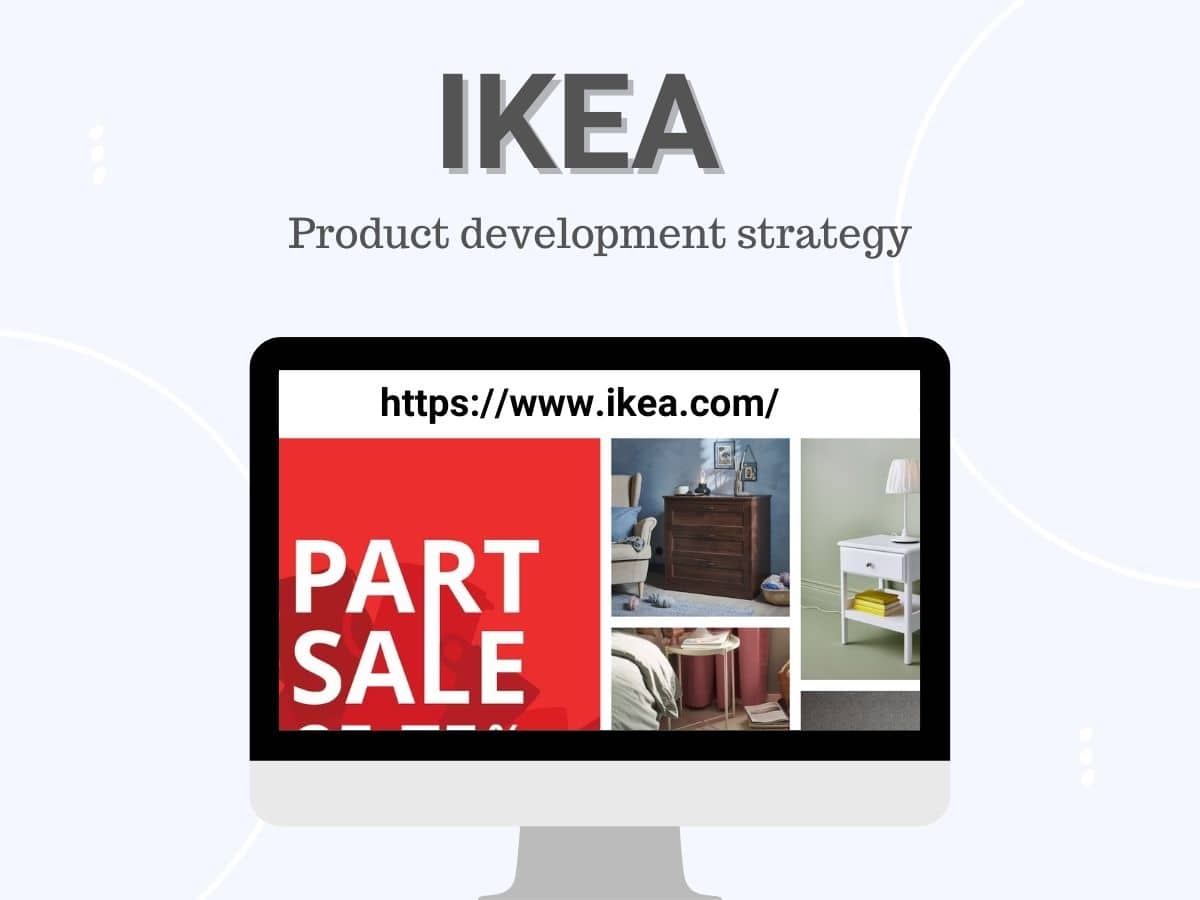
The next example we will discuss is the most popular and budget-friendly home goods store, Ikea. The company has built its business around providing low-cost products that maintain a consistent level of quality.
To achieve this, the company has developed an extensive global supply chain that relies on a high volume of interchangeable parts. In the past, IKEA has leased equipment to its suppliers and provided training to ensure consistent quality.
As the company has grown into an international brand, it has reorganized its supply chain to manage the large volume and geographical dispersion of its suppliers. And that was the right thing to do. Now, IKEA’s expertise in supply chain management allows the company to offer a wide range of furnishings for any home.
We can’t forget to mention, IKEA has a strong commitment to sustainable design principles and smart design, which is supported by its unmatched supply chain capabilities.
6. Customer-centered and freemium: Zoom’s product development strategy

Undoubtedly, Zoom is now a household name. Following the COVID-19 pandemic, the company quickly established itself as a leader in the video conferencing industry. Thanks to its cloud-based communication tool, users can interact with one another through audio, video, and chat.
Furthermore, with a strong focus on customer satisfaction, the platform offers a user-friendly experience with core features available for free for up to 100 participants and 40 minutes. This freemium model allows new users to test the product before committing to a subscription.
To point out, the company has received recognition for its product-led growth strategy, which focuses on user acquisition, retention, and conversion through the product itself.
7. Acquisition and divestment: Kellogg’s product development strategy
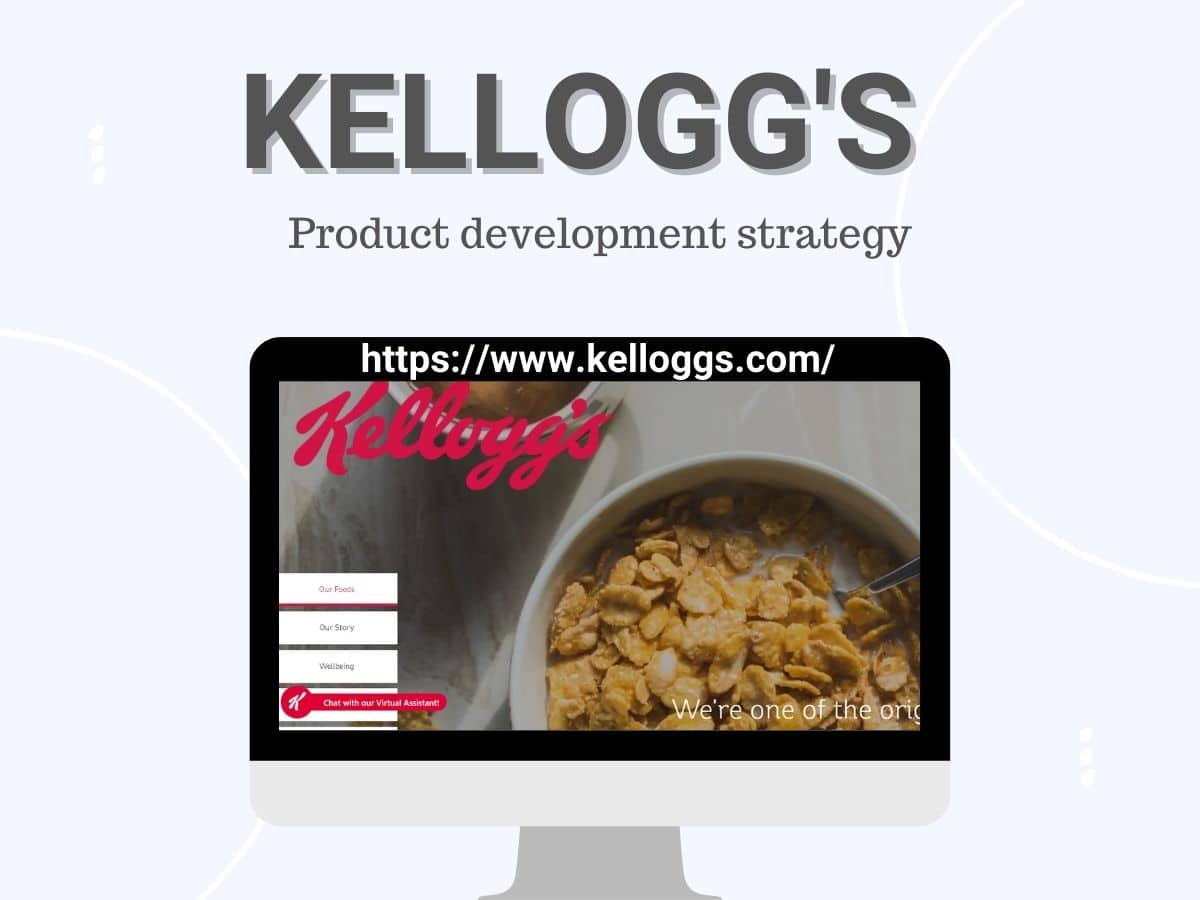
Kellogg’s, the American most popular cereal brand, has adopted an interesting strategy that involves both selling and buying assets.
To stay ahead of the curve and better serve consumers, the company may have to let go of some of its most beloved cereal brands. Furthermore, as consumer preferences shift away from sugary and carb-heavy foods, the cereal market is declining.
As a result, Kellogg’s iconic cereals like Corn Flakes, Frosted Flakes, and Froot Loops, which were a favourite of Boomers, are no longer as popular. In line with this strategy, Kellogg has sold off brands like Keebler and Famous Amos cookies and has acquired brands like RXBAR that align more with health-conscious consumer trends.
8. New brand acquisition: Coca-Cola’s strategy

Coca-Cola, a global beverage company, has acquired a number of other companies over the years as part of its growth strategy. Some of the reasons for these acquisitions include expanding the product portfolio and diversifying revenue streams, entering new markets, acquiring new technologies and capabilities, and strengthening the company’s competitive position.
These acquisitions have allowed Coca-Cola to expand its product offerings, enter new markets, gain access to innovative technologies, and better compete with other large beverage companies.
9. Product and service diversification: Google’s product development strategy

Google’s product development strategy is centred around creating an ecosystem that captures and retains users, while also increasing consumption of their products.
As a result, the company generates more profits and establishes a strong brand awareness. Furthermore, in order to achieve this, Google employs two key sub-strategies.
Firstly, they engage in company and product acquisitions, where they acquire rising talent and further develop the newly acquired product under their branding. Secondly, they practice vertical integration across various industries such as computer hardware manufacturing, marketing, and entertainment.
By selling their services to different sectors through specializations, they are able to generate more revenue. Although this strategy may not directly apply to small or medium-scale software companies, it can serve as an inspiration for growing product teams to follow.
10. Purpose-oriented strategy of independent squads: Spotify’s Approach

Last but not least on our list, is the product development strategy with Spotify.
Spotify has a unique organizational structure that utilizes groups called Squads, Tribes, Alliances, and Guilds, which reflects their “Growth Mindset.” Along with this structure, they have developed the “Spotify Model,” their own version of a product development strategy.
This model allows each product team (Squad) the freedom to choose their preferred project management frameworks, such as Agile Scrum or Kanban.
Each team operates independently, but the Spotify Model encourages collaboration on high-level objectives through composite groups called “Tribes.” Additionally, there are specialized roles such as “Chapters,” which consist of senior leads or architects that help Squads improve their products.
The Spotify Model offers a unique approach for tech leads looking to streamline development and simplify inter-team collaboration.
The Spotify Model is worth considering for tech leads looking to improve their product development process. It allows for flexibility by giving product teams the freedom to choose their preferred project management frameworks and encourages collaboration through composite groups and specialized roles.
Its unique organizational structure reflects Spotify’s “Growth Mindset” and is a different approach from traditional product development strategies.
Product Development Strategy Conclusion
It’s natural to wish for a one-size-fits-all solution when it comes to product development strategy. However, the reality is that every company has its unique goals and needs.
Big companies may adopt one, two, or even multiple strategies. Some companies have a customer-centric approach, such as Adidas with its focus on sustainability, while others, like Kellogg’s, decide to divest and acquire new assets to adapt to changing consumer trends.
Companies like Google and Spotify have found success in creating an ecosystem that captures and retains users, while also increasing consumption of their products.
Google does this through the company and product acquisitions and vertical integration across various industries, while Spotify does this through a unique organizational structure that utilizes groups called Squads, Tribes, Alliances, and Guilds, and a product development strategy that allows for flexibility and encourages collaboration.
It’s crucial for businesses to understand their specific needs and find the strategy that works best for them. This might be one of the strategies mentioned or something entirely different. Furthermore, it’s essential to continuously evaluate and adapt the strategy to align with market trends and customer needs.
Latest Posts
Machine Learning In Finance: 12 Essential Applications
The impact of machine learning on finance is significant. Thanks to this technology, financial institutions are now equipped to make efficient decisions. Through the analysis of data sets, machine learning […]
How To Create Interactive Compliance Training For Bank Employees
Banking compliance training isn’t just another task. It’s the stage where everything else performs. Banks must navigate a myriad of regulations and laws. After all, this is a trust-driven, high-stakes […]
How Fintech Apps Are Using Gamification To Increase User Engagement
Discover how gamification in fintech is revolutionizing financial engagement, making banking fun & boosting user loyalty.




